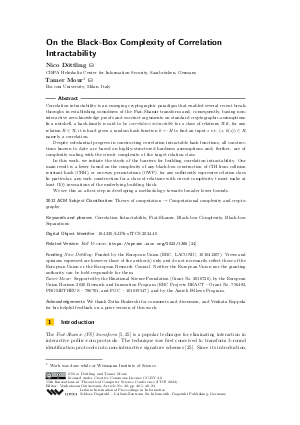LIPIcs.ITCS.2024.40.pdf
- Filesize: 1.05 MB
- 24 pages

 Creative Commons Attribution 4.0 International license
Creative Commons Attribution 4.0 International license






















Feedback for Dagstuhl Publishing